Peaceful Coexistence in the Great Outdoors
Picture this: You’re snuggled up in your sleeping bag, dreaming of campfire food and starry skies, when suddenly, a rustling sound outside your tent jolts you awake. Your heart races as you realise it might be a curious bear investigating your campsite! Yikes!
Hey there, fellow nature enthusiasts! I’m Will, your friendly neighbourhood camping guru, and today we’re diving into the wild world of wildlife safety for campers.
After a few experiences of camping in some of Europe’s most beautiful (and sometimes scary) places, I’ve had a few close encounters with wildlife.
But don’t worry – I’m here to share all the tips and tricks I’ve learned to keep both you and our furry (or scaly) friends safe and happy.
Whether you’re a seasoned camper or a newbie to the great outdoors, understanding wildlife safety is crucial for a successful camping trip.
It’s all about finding that sweet spot between enjoying nature’s wonders and respecting the creatures that call the wilderness home. So grab your bear spray (but don’t use it just yet!), and let’s explore how to be wildlife-wise campers!
In this guide, we’ll cover everything from choosing the perfect campsite to handling unexpected animal encounters.
We’ll also dive into essential gear, food management techniques, and what to do if you find yourself face-to-face with a wild animal. Ready for an adventure? Let’s go!
Table of Contents
Decode Wildlife Behaviour: Stay Safe, Not Sorry
Gear Up for Wildlife Safety: Your Camping Lifeline
Choose Your Campsite Wisely: Outsmart Nature’s Neighbours
Master Camp Cooking: Keep Wildlife Off Your Guest List
Face-to-Face with Wildlife: Your Survival Playbook
Learn from Close Encounters: Turn Fear into Wisdom
Wrapping Wildlife Safety for Campers
Decode Wildlife Behaviour: Stay Safe, Not Sorry
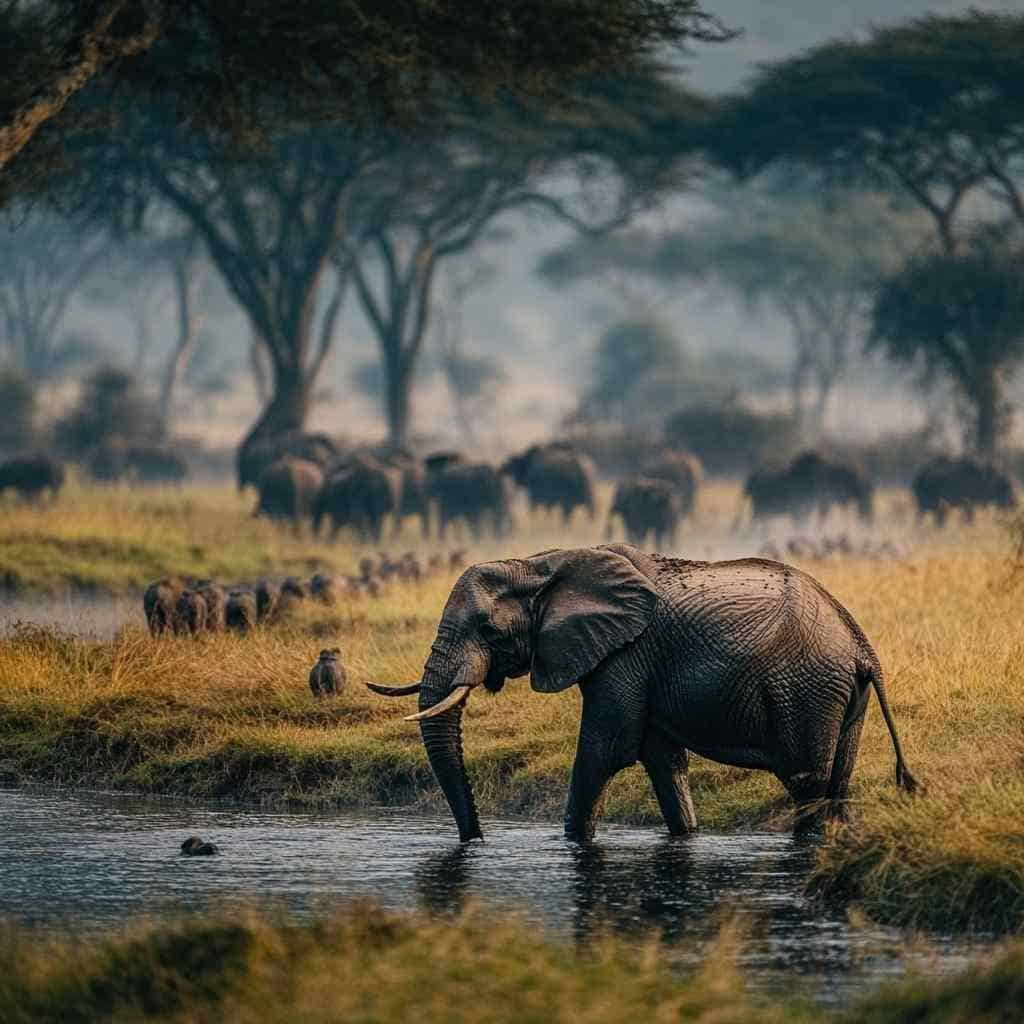
Alright, campers, let’s talk about our wild neighbours!
Understanding wildlife behaviour is like learning a new language – it takes time, but it’s so worth it. Trust me, it’s easy to misinterpret a black bear’s body language. Let’s just say I’m glad I was wearing my brown trousers when it happened to me!
Types of wildlife you might encounter: In North America, they have a diverse cast of characters. You might run into black bears, grizzlies, mountain lions, wolves, moose, elk, racoons, and even sneaky little mice looking for a midnight snack.
Each animal has its own unique behaviours and patterns. For example, bears are most active at dawn and dusk, while racoons are infamous night owls.
Common wildlife behaviours:
- If you see a bear standing on its hind legs, don’t panic! It’s not charging; it’s just trying to get a better look (or sniff) of you.
- Mountain lions are solitary and elusive. If you spot one, consider yourself lucky (but also, stay calm and back away slowly).
- Moose might look docile, but during mating season, they can be more dangerous than bears. Always give them a wide berth!
Seasonal considerations:
- Spring is baby season! Be extra careful, as mama bears and other protective parents are on high alert.
- Autumn means animals are preparing for winter, so they’re extra hungry and might be bolder in their search for food.
Pro tip: Before your trip, research the specific wildlife in the area you’ll be camping in. Each national park or camping area has its own unique ecosystem and wildlife safety tips. Knowledge is power!
Gear Up for Wildlife Safety: Your Camping Lifeline
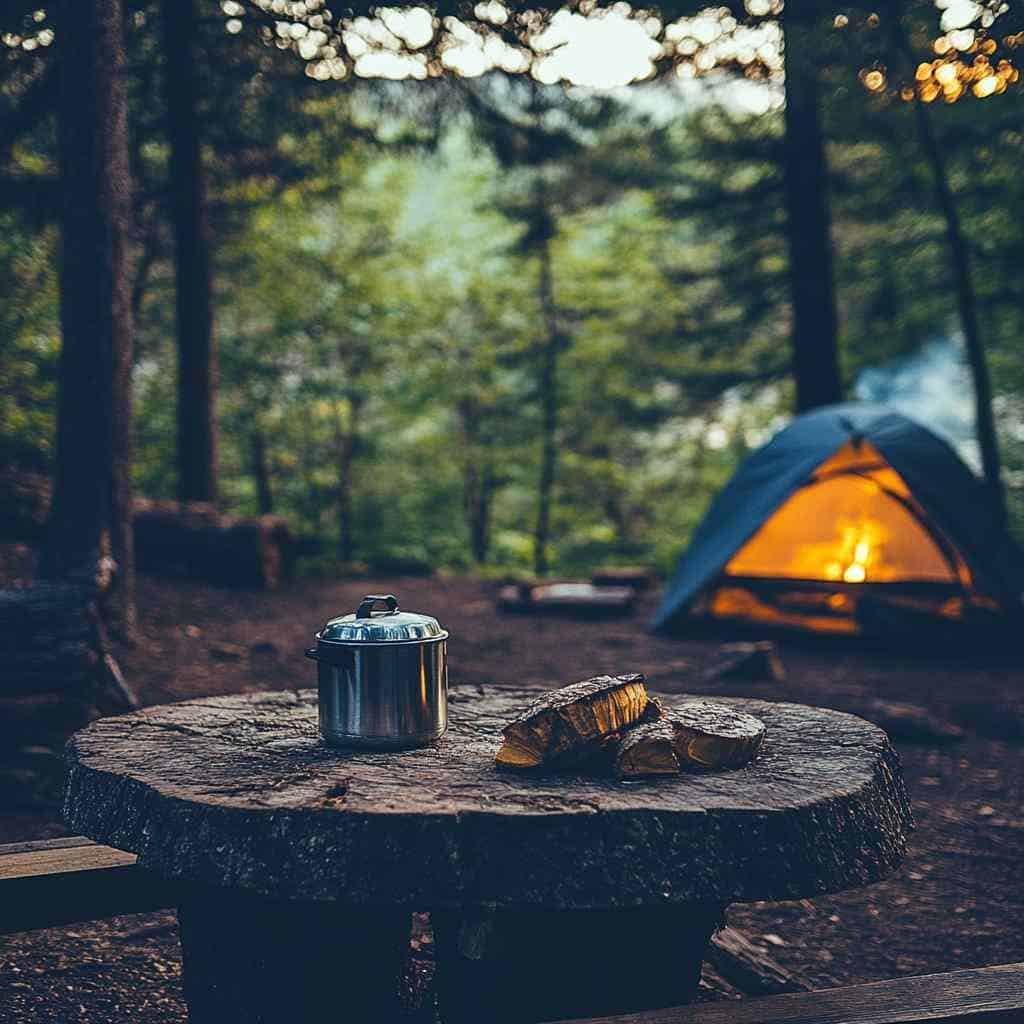
Let’s talk gear, my outdoor-loving friends! Having the right equipment can mean the difference between a peaceful camping trip and an unwanted wildlife encounter.
Here’s what I’d never leave home without:
- Bear canisters and food storage containers:
- These bad boys are a must-have in bear country. They’re like Fort Knox for your food, keeping smelly treats locked away from curious critters.
- Pro tip: Practice opening and closing your bear canister before your trip. Trust me, you don’t want to be fumbling with it in the dark!
- Wildlife deterrent sprays:
- Bear spray is your best friend in bear country. It’s like pepper spray on steroids, and it’s effective against other large animals too.
- Remember: Bear spray is a last resort. Proper food storage and staying aware of your surroundings are your first line of defence.
- Appropriate clothing and footwear:
- Bright colours help you stand out to both wildlife and other campers. Avoid whites and blues, which can attract insects.
- Sturdy boots protect your feet and make noise as you walk, alerting animals to your presence.
- First-aid kit:
- Always pack a comprehensive first-aid kit. Include items specific to wildlife encounters, like pressure bandages for snake bites.
- Consider taking a wilderness first aid course. I did this time of training in the army, and it’s been a game-changer!
- Noise-making devices:
- A simple whistle can help scare away curious animals and signal for help if needed.
- Some campers swear by “bear bells,” but your voice is just as effective.
Remember, the best gear is the gear you know how to use. Practice with your equipment before heading out, and you’ll feel like a wildlife safety superhero in no time!
Choose Your Campsite Wisely: Outsmart Nature’s Neighbours
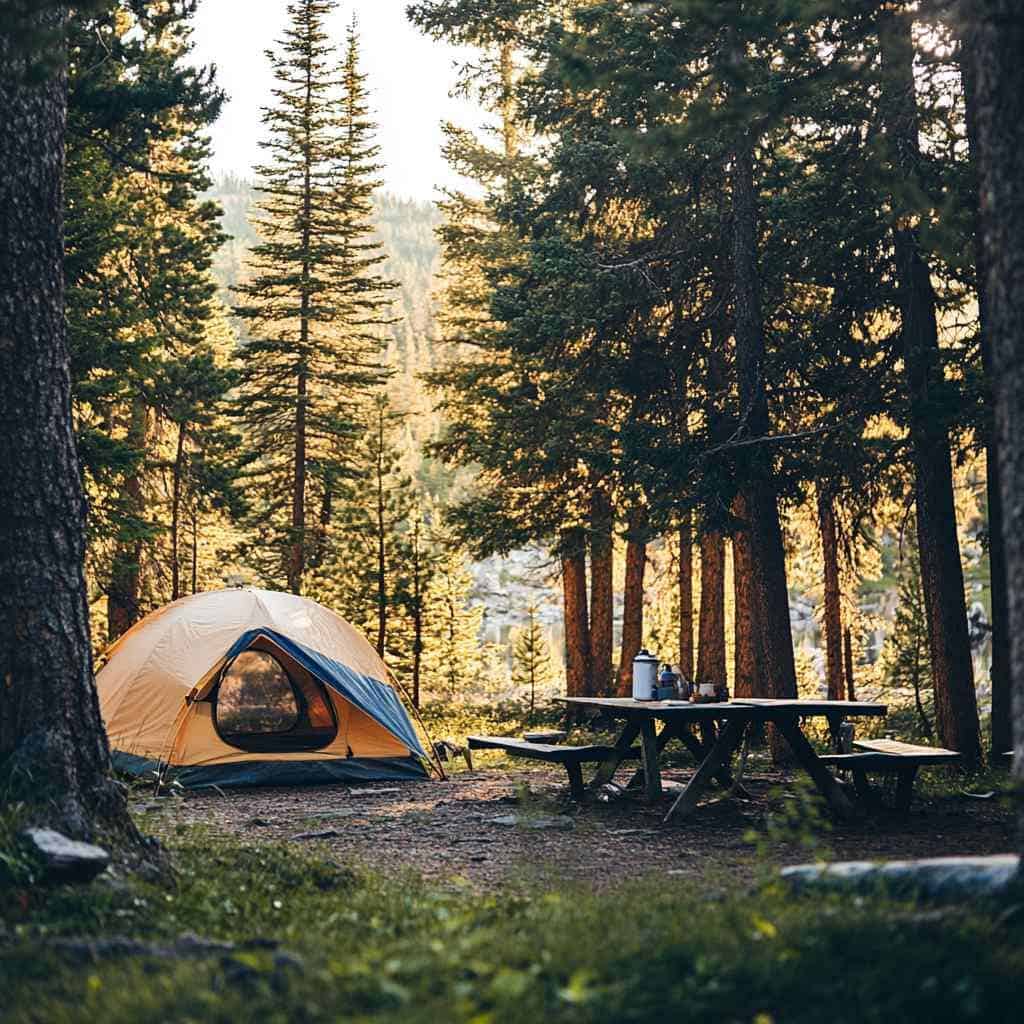
Choosing the right campsite is like finding the perfect apartment – location, location, location! Here’s how to set up your outdoor home-sweet-home with wildlife safety in mind:
- Choose wisely:
- Stay away from animal trails and water sources. These are like wildlife highways, and you don’t want to be in the fast lane!
- Look for open areas with good visibility. This helps you spot animals before they get too close.
- In bear country, avoid berry patches or areas with lots of fish. These are bear buffets!
- Create a “bear-muda triangle”:
- This isn’t a mysterious place where tents disappear. It’s a smart campsite layout!
- Place your sleeping area, cooking area, and food storage area in a triangle, about 100 yards apart from each other.
- This keeps food smells away from where you sleep, reducing the chance of nighttime visitors.
- Proper food storage:
- Use bear canisters or bear bags to store your food. In some areas, bear lockers are provided –use them!
- Hang food bags at least 10 feet high and four feet from the trunk of a tree.
- Remember: If it smells, it goes in the bear canister. This includes toiletries, trash, and even clothes you cook in.
- Use natural barriers:
- Set up your tent near large boulders or dense bushes. These can act as natural deterrents for curious animals.
- However, make sure you’re not blocking any animal paths. You don’t want to get in the way of a mama bear’s midnight stroll!
- Stay quiet: • Keep noise to a minimum, especially at night. Wildlife is more active during dawn and dusk. • Use low voices and avoid sudden loud noises that might startle nearby animals.
Remember, a well-chosen campsite is your first line of defence against unwanted wildlife encounters. Take your time setting up, and you’ll sleep easier knowing you’re not in Yogi Bear’s favourite picnic spot!
Master Camp Cooking: Keep Wildlife Off Your Guest List
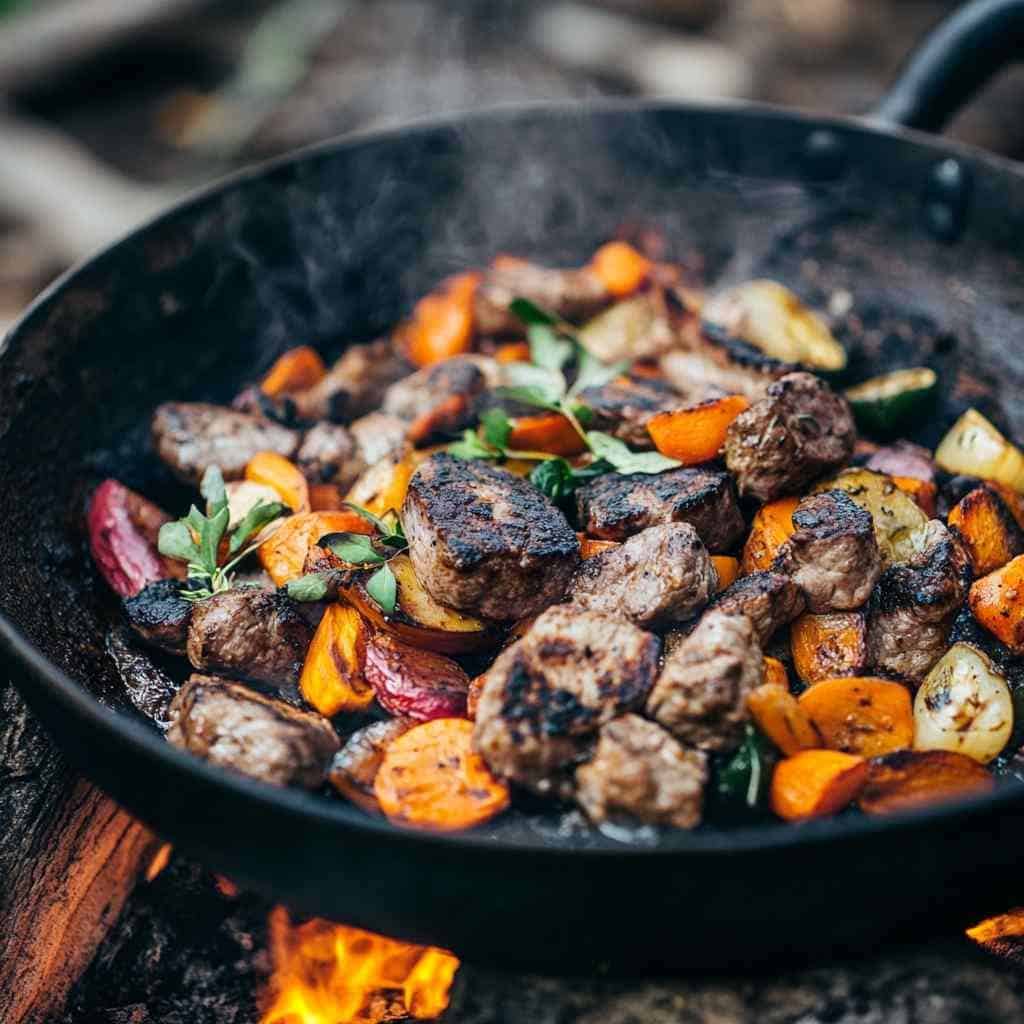
Alright, campers, let’s talk grub! Proper food management is crucial for wildlife safety. After all, we don’t want to accidentally invite a bear to our barbecue, right?
- The golden rule of food storage:
- If you can smell it, so can they! Store ALL food, trash, and scented items (yes, even that fancy deodorant) in airtight containers or bear canisters.
- Keep these containers at least 100 yards from your campsite.
- Never, ever keep food in your tent. Trust me, waking up to a bear or a lion sniffing around your sleeping bag isn’t a fun camping memory!
- Cooking techniques to minimise odours:
- Cook downwind from your campsite to keep food smells away from your sleeping area.
- Avoid cooking strong-smelling foods like bacon or fish. I know, I know, bacon is delicious – but it’s also a bear’s favourite perfume!
- Use a camping stove instead of cooking over a fire. It’s easier to control and clean up.
- Disposing of food waste:
- Pack it in, pack it out! Never leave food scraps behind.
- Use sealed containers or odour-proof bags for food waste.
- If you must dispose of liquids, do so far from your campsite and dilute them with water.
- Personal hygiene:
- Brush your teeth and spit at least 100 yards from your campsite.
- Change out of clothes you cooked in before going to bed.
- Use unscented toiletries when possible. Mountain lions aren’t impressed by your cologne!
Remember, good food management isn’t just about avoiding bears. Even small creatures like mice and racoons can cause big problems if they get into your food supply. Stay vigilant, my friends!
Face-to-Face with Wildlife: Your Survival Playbook
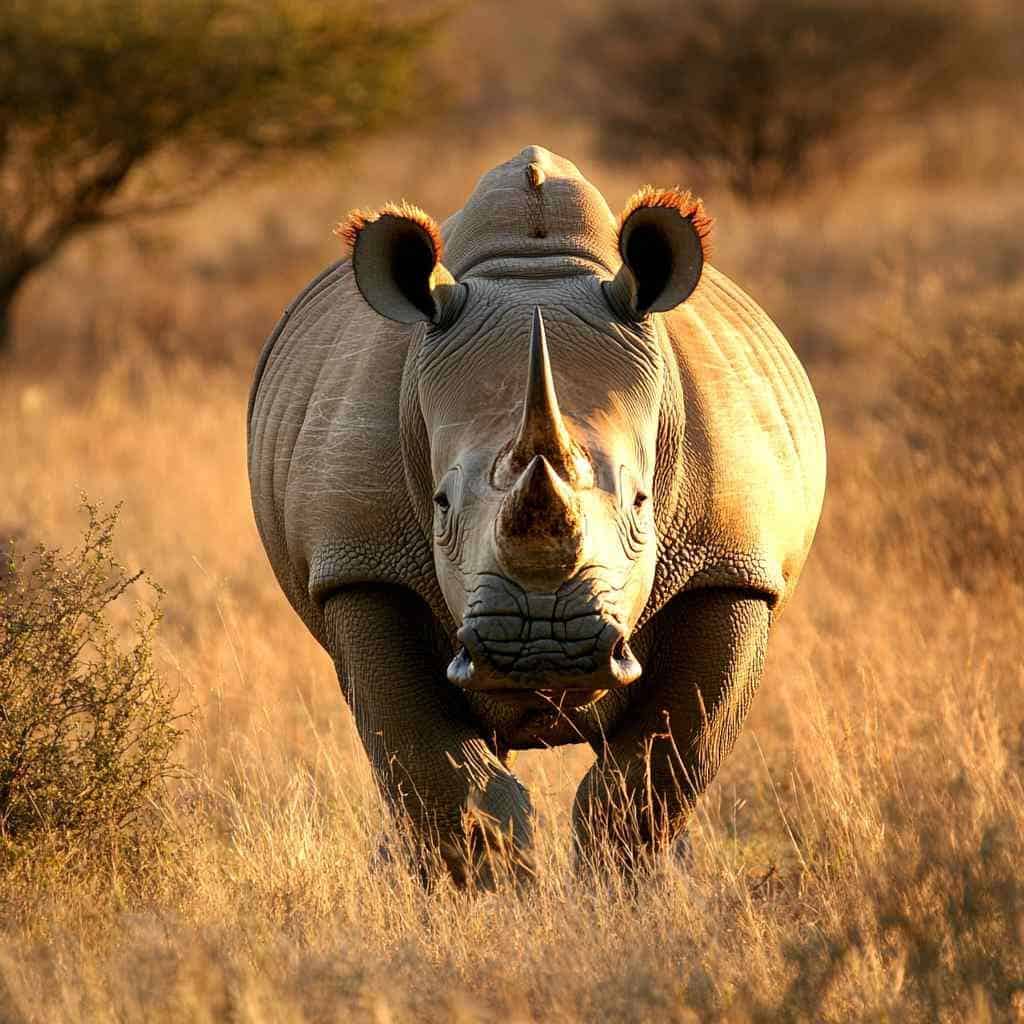
Okay, deep breath everyone. Let’s talk about what to do if you find yourself face-to-face with a wild animal. First things first: don’t panic! I know it’s easier said than done (trust me, I’ve been there), but staying calm is key.
- Assess the situation:
- Stay quiet and try to determine what type of animal you’re dealing with.
- Look for signs of aggression or defensiveness. Is the animal aware of you? Does it look threatened?
- Most animals are just as scared of you as you are of them!
- Specific strategies for different animals:
- Bears: If it’s a black bear, stand your ground, make yourself look big, and make loud noises. For grizzlies, avoid eye contact and slowly back away.
- Mountain lions: Maintain eye contact, make yourself look big, and fight back if attacked.
- Moose: Give them a wide berth. If charged, hide behind a tree or large object.
- Snakes: Slowly back away. Most snakes will avoid confrontation if given the chance.
- Using wildlife deterrents:
- Bear spray should be your last resort. When using it, point it slightly downward and release the spray when the bear is between 20 to 30 feet away.
- Make noise! Shout, clap, or use a whistle to scare away animals.
- Give animals space and an escape route:
- Never corner a wild animal. Always ensure they have a clear path to leave the area.
- If you encounter an animal on a trail, back away slowly and take a different route if possible.
- Stay together:
- If you’re in a group, stick together. You’ll appear larger and more intimidating to wildlife.
- Avoid running, as this can trigger a predator’s chase instinct.
Wild animals a 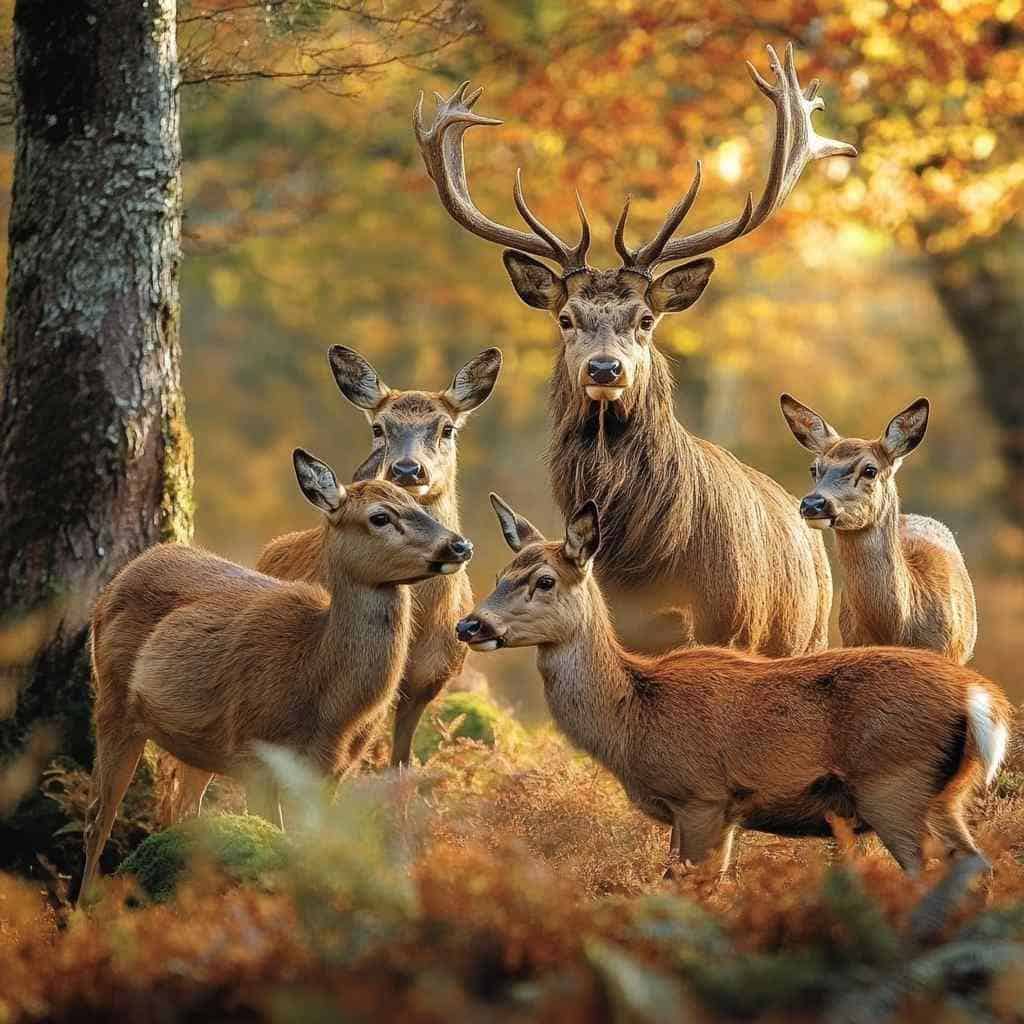
And hey, let me tell you about the time a friend of mine, Dan, I came face-to-face with a moose in Alaska. There he was, trudging along a narrow trail, when suddenly – BAM! – This massive moose and he locked eyes. Talk about a heart-stopping moment!
Now, here’s the thing: animals, just like us, can feel threatened when surprised or cornered. This moose? He was definitely not expecting to see his wide-eyed face on his morning stroll. It could see the doubt in his eyes, and he knew I had to act fast.
Remember what we talked about earlier? Give them space and an escape route. That’s exactly what he did. He slowly backed up, making myself as small and non-threatening as possible.
He avoided sudden movements and kept my voice low and calm. “Hey there, big guy,” he whispered, “Don’t mind me, just passing through.”
And you know what? It worked! After a tense moment that felt like an eternity, the moose snorted, shook his impressive antlers, and ambled off into the brush. Crisis averted!
The lesson here? When an animal feels threatened, your job is to de-escalate the situation. Stay calm, give them space, and show them you’re not a threat. It’s all about mutual respect in the great outdoors!
Now, let’s move on to what we should do after these wild encounters…
Learn from Close Encounters: Turn Fear into Wisdom
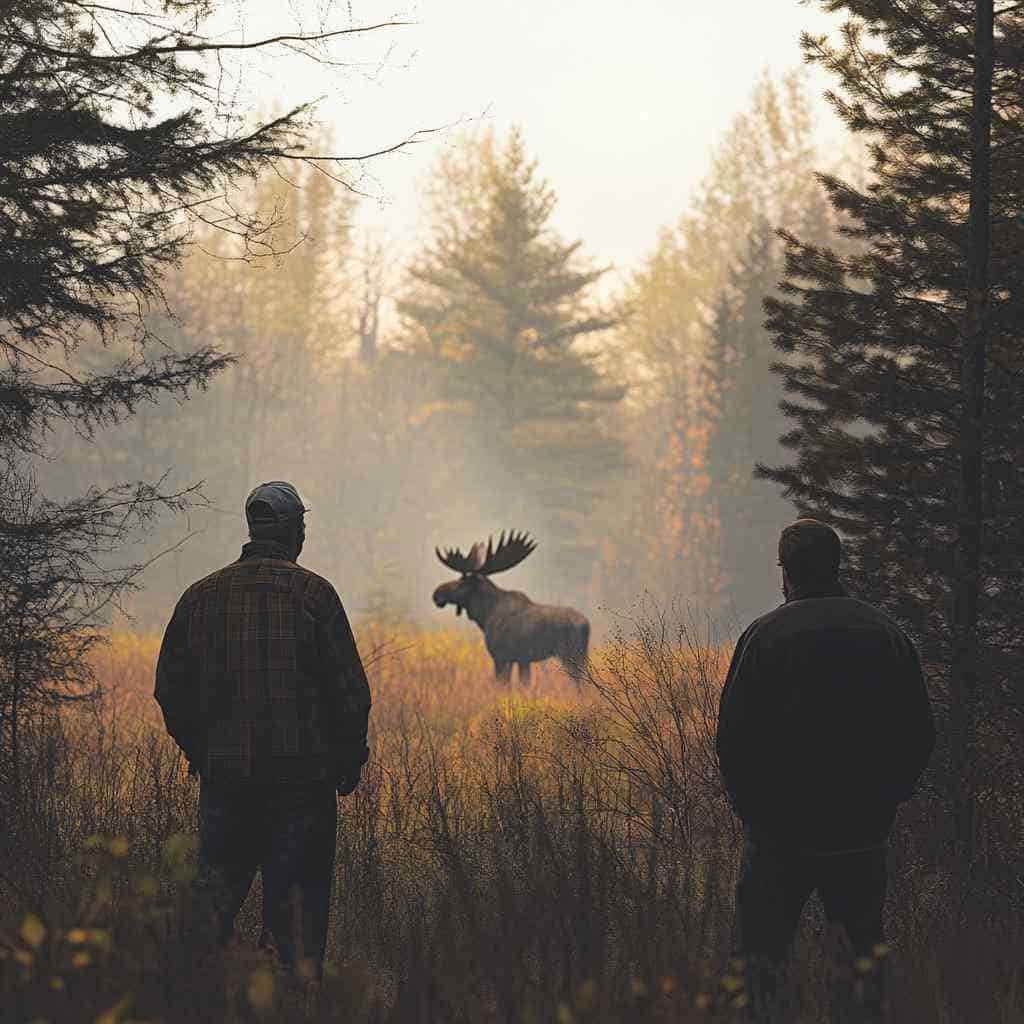
Whew! You’ve had a wildlife encounter and handled it like a champ. Now what? Let’s talk about the important steps to take after your brush with nature.
- Reporting wildlife sightings or incidents:
- Contact the local park ranger or wildlife authorities to report significant encounters.
- Provide detailed information: type of animal, location, time of day, and the animal’s behaviour.
- Your report helps park managers track wildlife patterns and keep other campers safe.
- Learning from the experience:
- Reflect on what happened. Did you follow safety protocols? What could you have done differently?
- Use this as a learning opportunity to improve your wildlife safety skills.
- Share your experience (and lessons learned) with fellow campers. We’re all in this together!
- Sharing information:
- Talk to park rangers about your encounter. They might have additional tips or insights.
- Update other campers in the area about wildlife activity. A friendly heads-up can go a long way!
- Consider sharing your story on camping forums or social media (with safety tips, of course).
- Participating in wildlife conservation:
- Look into local wildlife conservation efforts. Many parks offer volunteer opportunities.
- Support organisations working to protect wildlife and their habitats.
- Responsible camping helps preserve these amazing creatures for future generations to enjoy.
- Preparing for future trips:
- Review and update your wildlife safety gear and knowledge before your next camping trip.
- Consider taking a wildlife safety course or wilderness first aid training.
- Stay informed about wildlife activity in areas you plan to visit.
Remember, every wildlife encounter is a privilege. It’s a reminder that we’re guests in their home. By learning from our experiences and sharing our knowledge, we can all become better, safer, and more respectful campers.
Wrapping Wildlife Safety for Campers
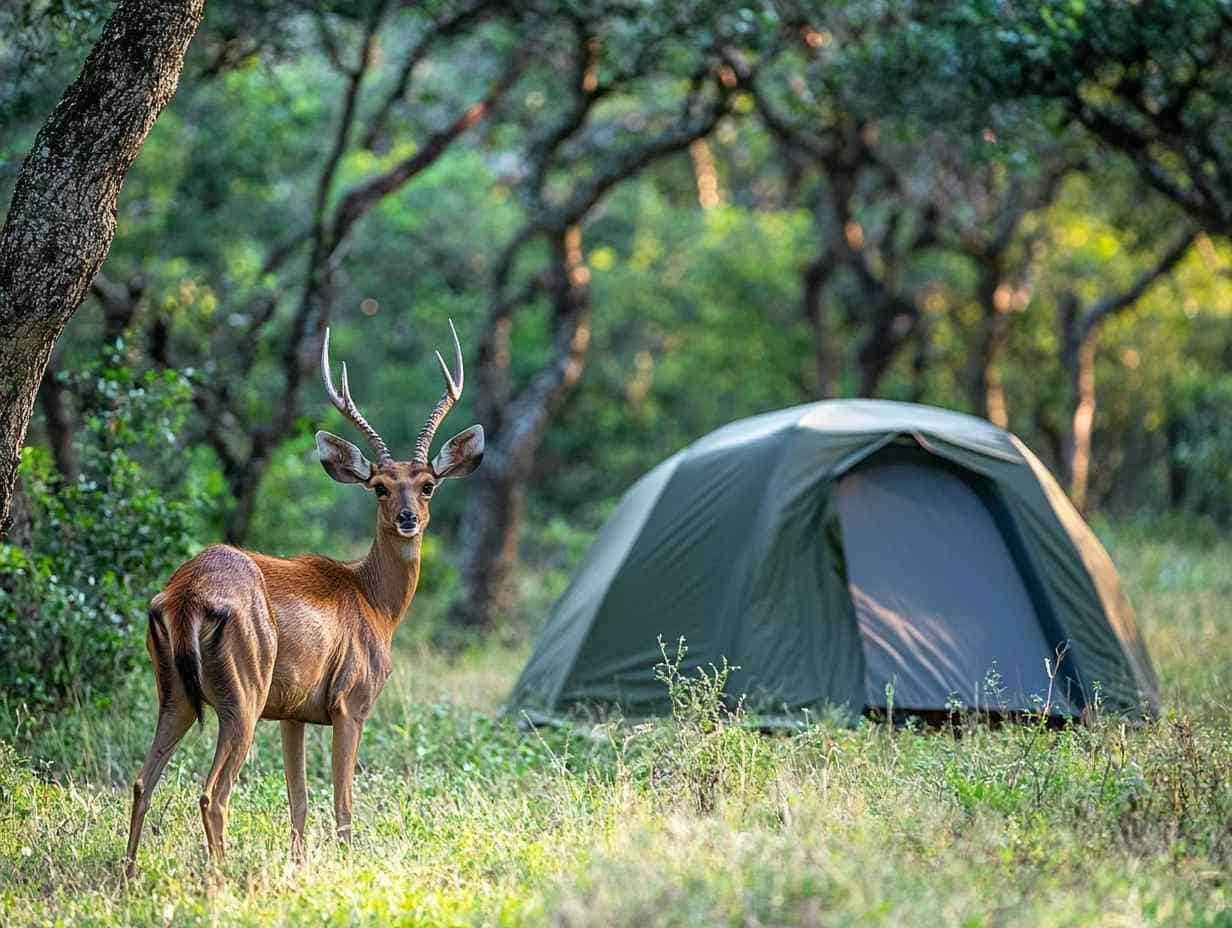
Well, fellow adventure seekers, we’ve journeyed through the wild world of camping and wildlife safety. From choosing the perfect campsite to handling unexpected animal encounters, you’re now armed with the knowledge to be a wildlife-wise camper!
Respecting wildlife isn’t just about safety. It’s also about keeping the beauty and wonder of the outdoors for everyone to enjoy.
By following these tips, you’re not only protecting yourself but also ensuring that future generations can experience the thrill of seeing a majestic moose or hearing a wolf howl in the distance.
As you pack up your gear and head out on your next camping trip, keep these wildlife safety tips in mind. Stay aware of your surroundings, store your food properly, and always give wild animals the space and respect they deserve.
And hey, if you do have a wildlife encounter, stay calm and remember – you’ve got this!
Now it’s your turn! I’d love to hear about your own wildlife encounters or any additional safety tips you’ve picked up along the trail.
Drop a comment with us and share your stories. Who knows? Your experience might just help another camper stay safe out there.
So, grab your bear spray (but hopefully you won’t need it), lace up those hiking boots, and get ready for an amazing, wildlife-friendly camping adventure.
The great outdoors is calling, and now you’re ready to answer – safely and responsibly.
Happy camping, everyone!

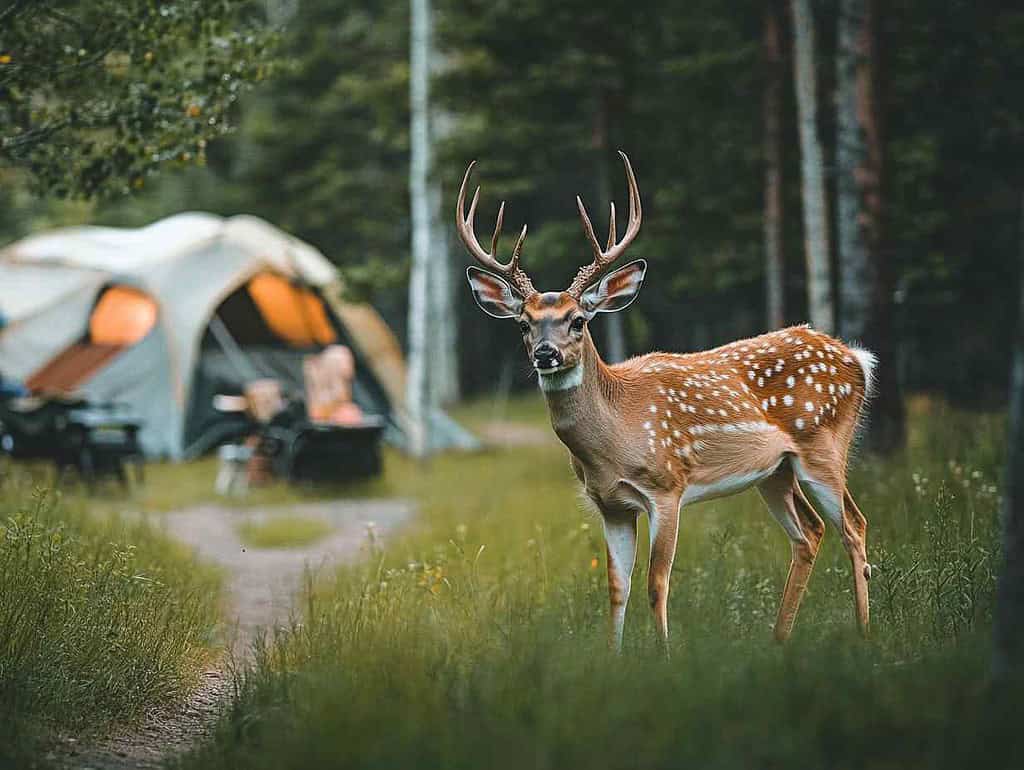
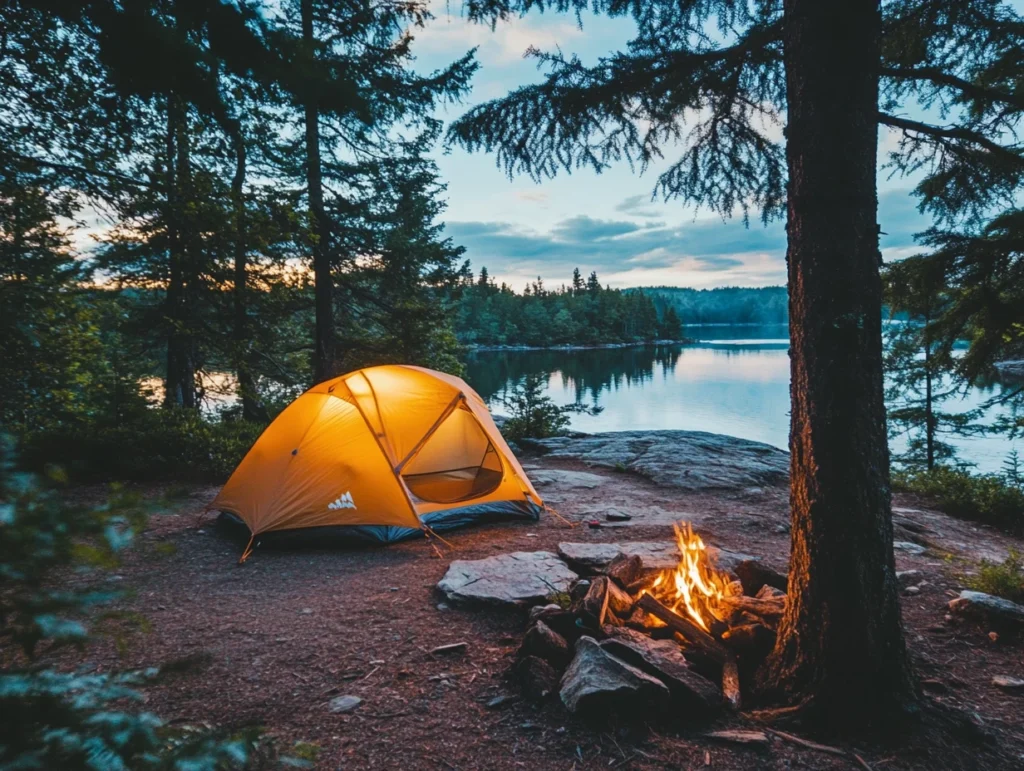
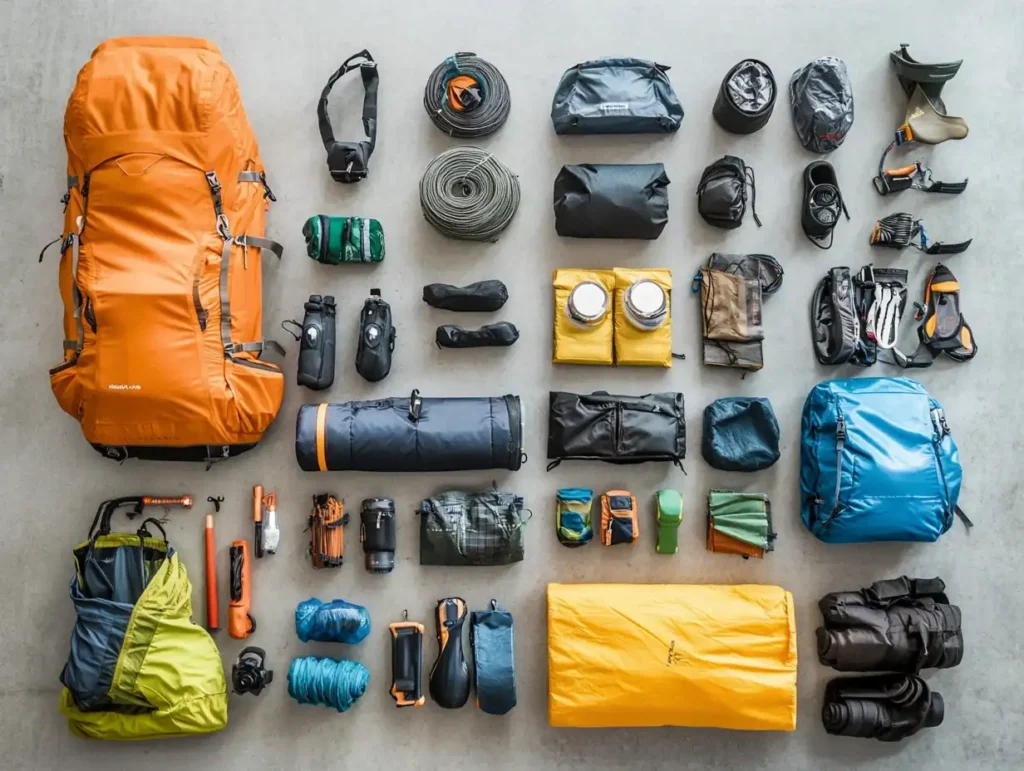
Pingback: Campfire Cooking Recipes: Guide to Outdoor Cooking | WBH
Pingback: Essential Camping Skills for Beginners: 2024 Guide
Pingback: 7 Beginner Hiking Tips to Crush Trail Anxiety [2024 Guide]
Pingback: How to Choose the Perfect Camping Tent [2024 Guide] | WBH
Pingback: Eco Friendly Camping: Sustainable Outdoor Adventures in 2024
Pingback: 15 Essential Winter Camping Tips | WBHawkins.com
Pingback: Navigation Techniques: How to Use a Map and Compass | WBH
Pingback: 15 Essential Family Camping Tips [2024] | WB Hawkins
Pingback: The Ultimate Guide to Camping Food Storage | WBHawkins